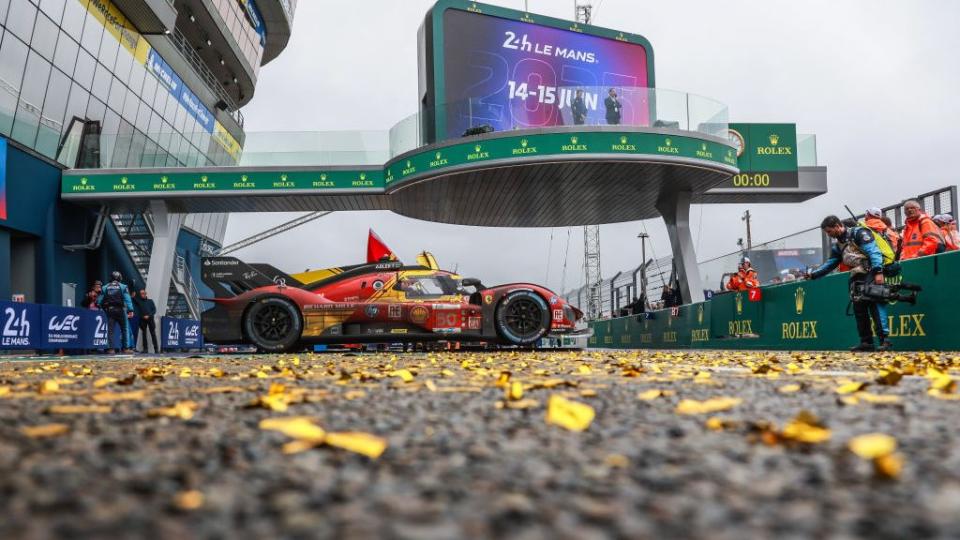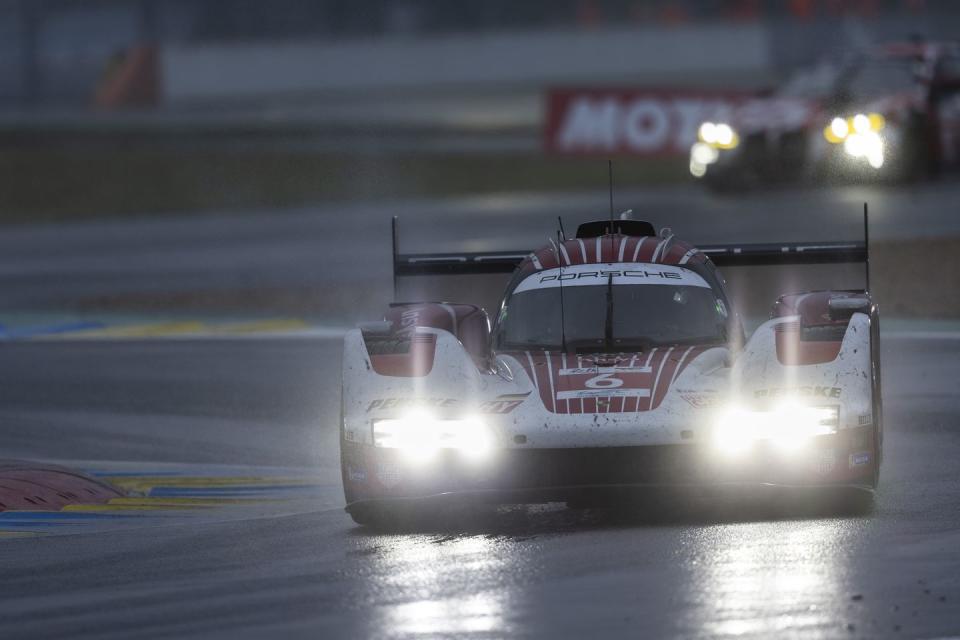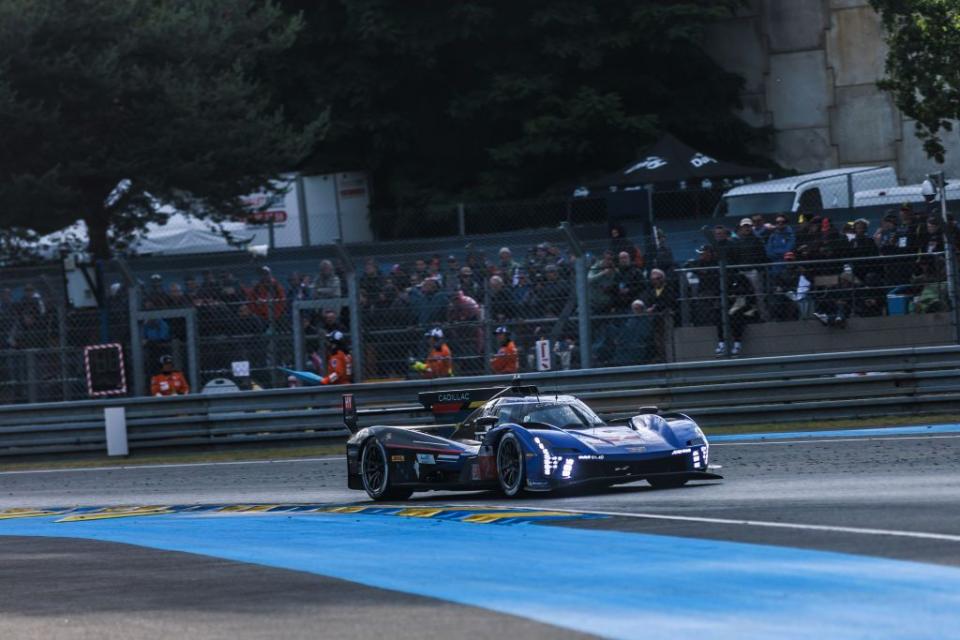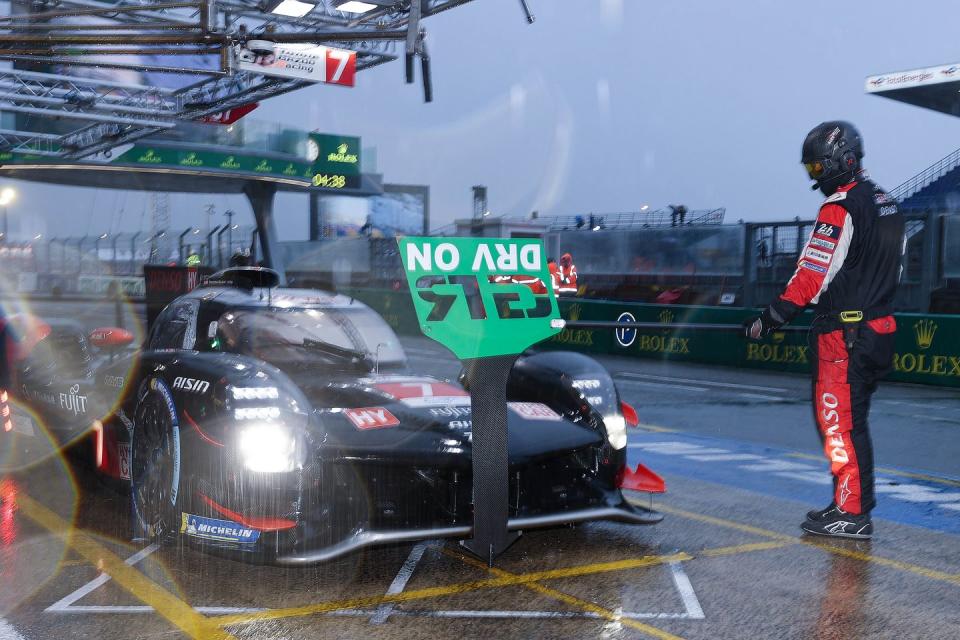The Most Competitive Le Mans Ever Made for Insane Racing. It's Only the Beginning.

In the first century of the 24 Hours of Le Mans, no race ever ended with more than two cars on the same lead lap. The fall of that record looked inevitable under a long safety car for severe weather, and about nine hours later, it was smashed. Nine cars finished the 101st year of the 24 Hours of Le Mans on the lead lap, representing four manufacturers and four very different Sundays at the Circuit de la Sarthe.
When these rules were written, this was the dream the sanctioning bodies behind the 24 Hours of Le Mans envisioned. Four cars, each with a distinct sound and look, had a legitimate shot to win Le Mans if things went their way. Reliability issues and crashes throughout the field robbed the 2023 race of this kind of finish, but 2024 lived up to every bit of the promise of the new golden age of sports cars.

Eight major manufacturers lined up to start the race. Alpine, BMW, Lamborghini, Porsche, and Cadillac chose entries under the LMDh rules, while Ferrari, Toyota, and Peugeot opted to use the more complicated LMH regulations. The Peugeot and the Lamborghini missed the mark on pace—no surprise for the still-troubleshooting Lamborghini SC 63 program but a major disappointment for the newly winged Peugeot 9X8. The debut Le Mans for the BMW M Hybrid V8 and Alpine A424 went sour fast; both of BMW's entries crashed on Saturday, while Alpine's two cars suffered major engine issues that forced them to retire out of an otherwise impressive debut.
That left four brands that had each run well for a stretch in last year's race: Ferrari, Toyota, Cadillac, and Peugeot. Each seemed fast enough to win heading into Sunday morning, and all four had a car within a minute of the lead when a safety car was called for a rolling Aston Martin GT car with just over six hours left in the race. That's when Cadillac made a bold move, leaving the brand's sole surviving competitive V-Series.R out to take the lead during the pit stop cycle. Reigning IndyCar champion Alex Palou—a driver who will probably have to miss this race due to schedule concerns next year—surprised by building a ten-second lead on the field between stops. A Porsche, two Ferraris, and two Toyotas were close behind.

The race flipped three hours later. Rain came just after the Cadillac made its off-cycle stop for fuel and new dry tires, pushing that car thirty seconds back of the leaders. The Cadillac struggled in the rain, burning through wet tires at an unsustainable rate and leaving surprise closing driver Palou with no real chance to attack. The entry faded to seventh, a worse result than last year after a more impressive race.
Porsche, too, could not keep up with the LMH-rule Ferraris and Toyotas in the rain. The No. 6 Porsche Penske 963, the car that started the race from pole, finished a disappointing fourth after failing to pass a fading No. 51 Ferrari on the race's final few laps.
That left a two-horse race, one between Ferrari and Toyota. Miguel Molina and Nicklas Nielsen put together heroic back-to-back stints in the No. 50 Ferrari 499 P to pull away with a commanding 30-second lead while the No. 51 Ferrari spun the No. 8 Toyota in a fight for second.

That then led to the No. 7 Toyota GR010 chasing the No. 50 Ferrari, which was forced to pit to close a loose door and was suddenly off-cycle with the rest of the leaders. The Ferrari AF Corse team had a big enough lead to consider a splash for fuel in the race's final laps, but they instead opted to try a full fuel save over the last 90 minutes of the race. Toyota's only counter was to let Jose Maria Lopez attack the 30-second gap at the front and force lead Ferrari driver Nielsen into pushing too hard to save fuel.
The plan came up short. Lopez spun once in the rain, but the real problem was an engine and a tire issue that kept the team from hammering hard to catch Ferrari in the final hour of the race. Toyota No. 7 finished just 14 seconds behind the Ferrari, around the margin lost on the spin.
Everything broke right, from the arrival of the rain to the timing of the Ferrari's emergency stop. Without the last storm, the Toyota engine issue, the call for Ferrari to receive just a reprimand for an under-speed hybrid system deployment in the 22nd hour of the race, the timing of race control's decision to force the No. 50 down the pit lane, and every other lucky break the No. 50 Ferrari team experienced along the way, someone else would've won this race. The stars aligned, and instead, Ferrari is celebrating its second straight win in the race that made the brand's name so long ago.
That six-hour chase involved more than half a dozen cars from four different teams. Unprecedented is an understatement. This was, by far, the most competitive fight for the overall win at Le Mans ever. The great news is that none of this was a fluke; this was the result of a carefully planned rule set working exactly as intended, and next year's race should be just as competitive. And these rules are in place through at least 2029. This is just the beginning of a new golden age of sports car racing, one that will last through the entire decade.
You Might Also Like

 Yahoo Autos
Yahoo Autos 